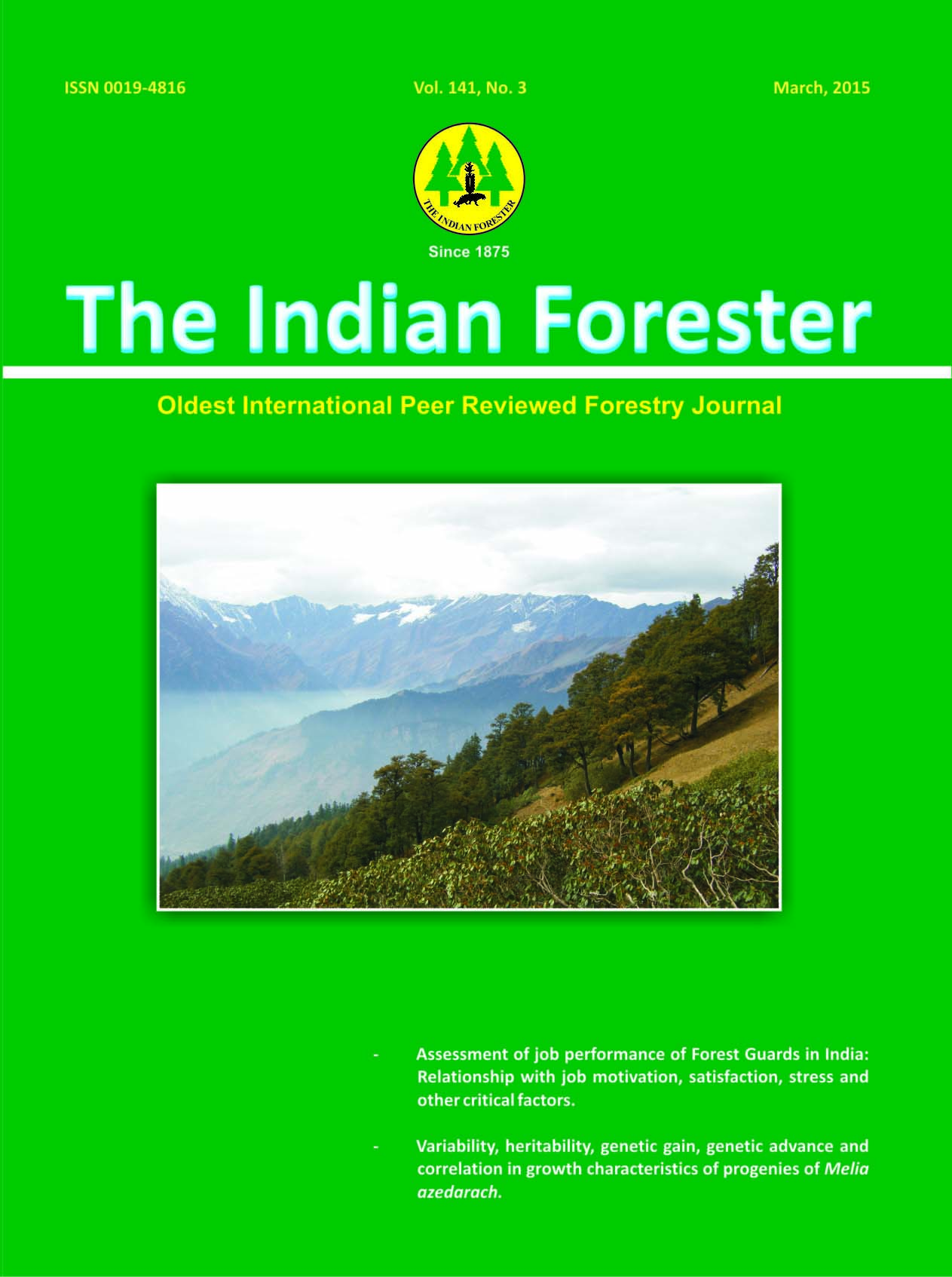Screening of Pine Needle's Extractives Against Wood and Bamboo Decaying Fungi
DOI:
https://doi.org/10.36808/if/2015/v141i3/63867Keywords:
Extractives, Resin, Essential Oil, Preservative.Abstract
Extractives from the pine needles (Pinus roxburghii. Sarg.) are rich in resin and essential oil and are effective in protecting wood and bamboo products. This study was conducted to evaluate the efficacy of pine needle's extractives at different concentrations against white rot (Trametes versicolor L. ex Fries.), brown rot (Oligoporus placentus. Murr.) and some common bamboo decaying fungi-Xylaria acuminata Hill. ex Schrank. and Hypochnicium punctulatum (Cooke) J. Erikss. by malt-agar bioassay with an objective to screen its activity as preservative. Results revealed an effectiveness of pine needle's extractivein inhibiting the growth of the decaying fungi completely at low concentration.References
Brias V. and Hunde T. (2009). Bamboo cultivation manual. Guidelines for cultivating Ethiopian highland bamboo. Eastern Africa bamboo project. Ministry of Agriculture and Rural Development, Ethiopia and Kenya Forestry Research Institute, Kenya. United Nations Industrial Development Organization, Vienna, Austria, 51pp.
Goyal P. and Dev I. (1982). Effect of extractives on durability of sal (Shorea robusta) wood. Journal of Timber Development Association (India). 28(4): 12-16.
Hunt G.M. and Garratt G.A. (1967). Wood preservation. Third Edition. The American Forestry Series. McGraw-Hill, New York.
IS-4873. (2008). Method of laboratory testing of wood preservatives against fungi and borers (powder post beetles). Bureau of Indian Standards.9, Bahadur Shah Zafar Marg, New Delhi, India.
Johnston A. and Booth C. (1968). Plant Pathologist's Pocketbook, Second Edition. Commonwealth Mycological Institute. Cambrian News Ltd, Aberystwyth, Wales.
Luna R.K. (1996). Plantation trees. International Book Distributors, Dehradun (India). Part III: 938-951.
Rawat R.B.S. and Chandran M. (2009). Pine needle check dams for soil and water conservation.P 1.XIII World Forestry Congress. Buenos Aires, Argentina, Oct.18th - 23rd 2009.
Vogel I. (1978). A Text Book of Practical Organic Chemistry: Including Qualitative Organic Analysis. Longmans, Green and Co., London, New York, Toronto.
Downloads
Downloads
Published
How to Cite
Issue
Section
License
Unless otherwise stated, copyright or similar rights in all materials presented on the site, including graphical images, are owned by Indian Forester.





